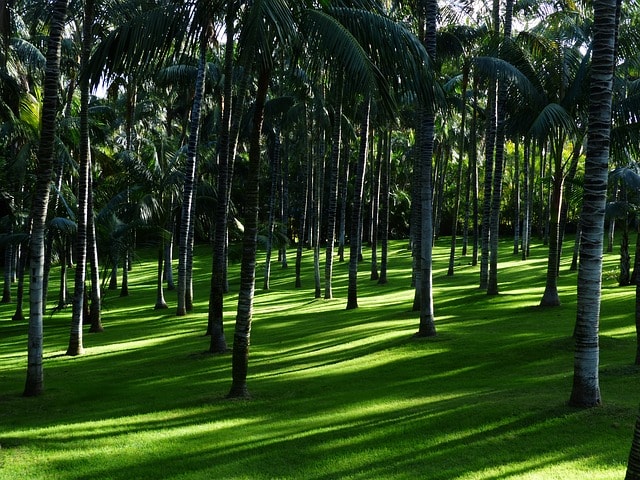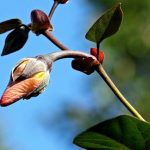Course Title: Turf Grasses BHT342
Turf Grasses BHT342
This turf grasses course is for you if you are a Green Keeper, Grounds-person, Turf Manager, or Gardener, or involved in any other profession involving turf. Specialists and general horticulturists alike will find this course an absolute must. It will help you decide on the best turf grass to use for a given situation.
A lawn is unnatural and man-made and could be looked at as tamed grass. Other plants might be used in creating a lawn. However in general, a lawn will only contain grass.
Turf Grass professionals plan and maintain lawns plus of course sports playing surfaces. They will select the right turf for the right purpose. For example, the turf grass used in your garden will be different to a lawn tennis court. This course will help you to make the choice.
Choosing the correct grass variety can influence the quality of the surface. Additionally, it will affect the turf grass health and its suitability for the situation. There should also be monetary and resource maintenance savings.
This distance learning course will teach you the characteristics of many grasses and where to use them. This includes: gardens, nature parks and in urban green scenarios applied to cities and towns etc. It will be a valuable addition to you, if you need a variety of turf grass solutions to call upon.
This course will give you a solid foundation in:
- Studying the characteristics of turf grasses, to identify the subtle differences between them
- Various turf grasses physiology.
- The attributes of the most commonly used species and sub species around the world, of grasses for lawns and turf,
- Comparing popular cultivars used for commercial and residential sports turfs, in Europe commercial and residential turf in a selection of countries from around the world.
- How and why species that are mixed together can improve the longevity of a lawn or turf and improves how it looks.
Lesson Structure: Turf Grasses BHT342:
1. Introduction
- Introduction
- What is Grass?
- Structure of a Typical Grass
- Description of Grasses
- Grass Terminology
- Culivar Selection Criteria
- How are Turf Grasses Genera Classified Scientifically?
- How are Turf Grasses Developed?
2. Fescues
- Introduction
- What are the More Important Cultivatars
- Leaf Shapes
- Chewings Fescue
- Tall Fescue
- Hair Fescue
- Meadow Fescue
- Sheep Fescue
- Slender Creeping Red Fescue
3. Bentgrasses
- Introduction
- Creeping Bent Grass
- Velvet Bent Grass
- Redtop Bent Grass
- Highland Bent Grass (Dryland Bent)
- Idaho Bent Grass
- Bent Grass Cultivatars
4. Ryegrasses
- Introduction
- Perennial Ryegrass
- Italian Ryegrass
- Annual Ryegrass
- Darnel
- Rye Grass Cultivatars
5. Bluegrasses
- Introduction
- Kentucky Bluegrass
- Annual Bluegrass, Annual Meadow-Grass or Winter Grass
- Supina Bluegrass
- Rough Bluegrass
- Canad Bluegrass
- Upland Bentgrass
- Wood Bluegrass
- Bulbous Bluegrass
- Blue Grass Culivatars
6. Couch grasses
- Introduction
- Overview
- Bermuda Couch Grass
- South African Couch
- Hybrid Couch
- Queensland Blue Couch or Crab Grass
- Salt Water Couch
7. Buffalo and Zoysia Grasses
- Introduction: Buffalo Grasses
- Introduction: Zoysia Grasses
- Buffalo Grasses
- Stenotaphrum
- Buchloe SPP. (Grama)
- Bouteloua
- Zoysiagrass
8. Other Warm Condition Grasses
- Introduction
- Centipedegrass
- Seashore Paspalum or Seashore Couch
- Bahiagrass
- Pennisetum
- Carpet Grass
- Sweet Smoother
- Comparing Drought Tolerance
9. Other Cool Condition Grasses
- Introduction
- Hairgrasses
- Timothy Grass
- Beach Grass
- Wheatgrass
- Crested Dogtail
- Salt Marsh Grass
- Brome Grass
- Phalaris
10. Turf grass Mixes
- Introduction
- Seasonal Variations
- Research
- Advantages of Blended Mixes
- Problems with Blended Mixes
- What Mixes With What?
Learning Goals: Turf Grasses BHT342:
You will learn to:
- Recognise the characteristics that differentiate turf grass cultivars one from another, in order to make choices about what cultivars are appropriate for different turf applications.
- Describe the characteristics, culture and uses of Fescue grasses as a turf.
- Define the characteristics, culture and uses of Bent grasses as a turf.
- Detail the characteristics, culture and uses of Rye grasses as a turf.
- Recognise the characteristics, culture and uses of Blue grasses as a turf.
- Describe the characteristics, culture and uses of Couch grasses as a turf.
- Define the characteristics, culture and use of Buffalo and Zoysia grasses.
- Detail the characteristics, culture and uses of various warm condition grasses as a turf.
- Describe the characteristics, culture and uses of various cool condition grasses as a turf.
- Explain the dynamics at play when different varieties of turf grass grow together.
Price: £340
Qualification: Certificate
Estimated Course Duration: 100 hours
Available Learning Methods: Online, USB (+£10) and Correspondence (+£35)
Enrolment Dates: Our courses are self-paced and you can start at anytime
Enrol Today
This link will open adlonlinecourses.com in a new tab.
Related Posts
As soon as payment has been confirmed you will be able to access your course materials online within 24 hours. Any further correspondence will arrive at your address between 3-4 days.







